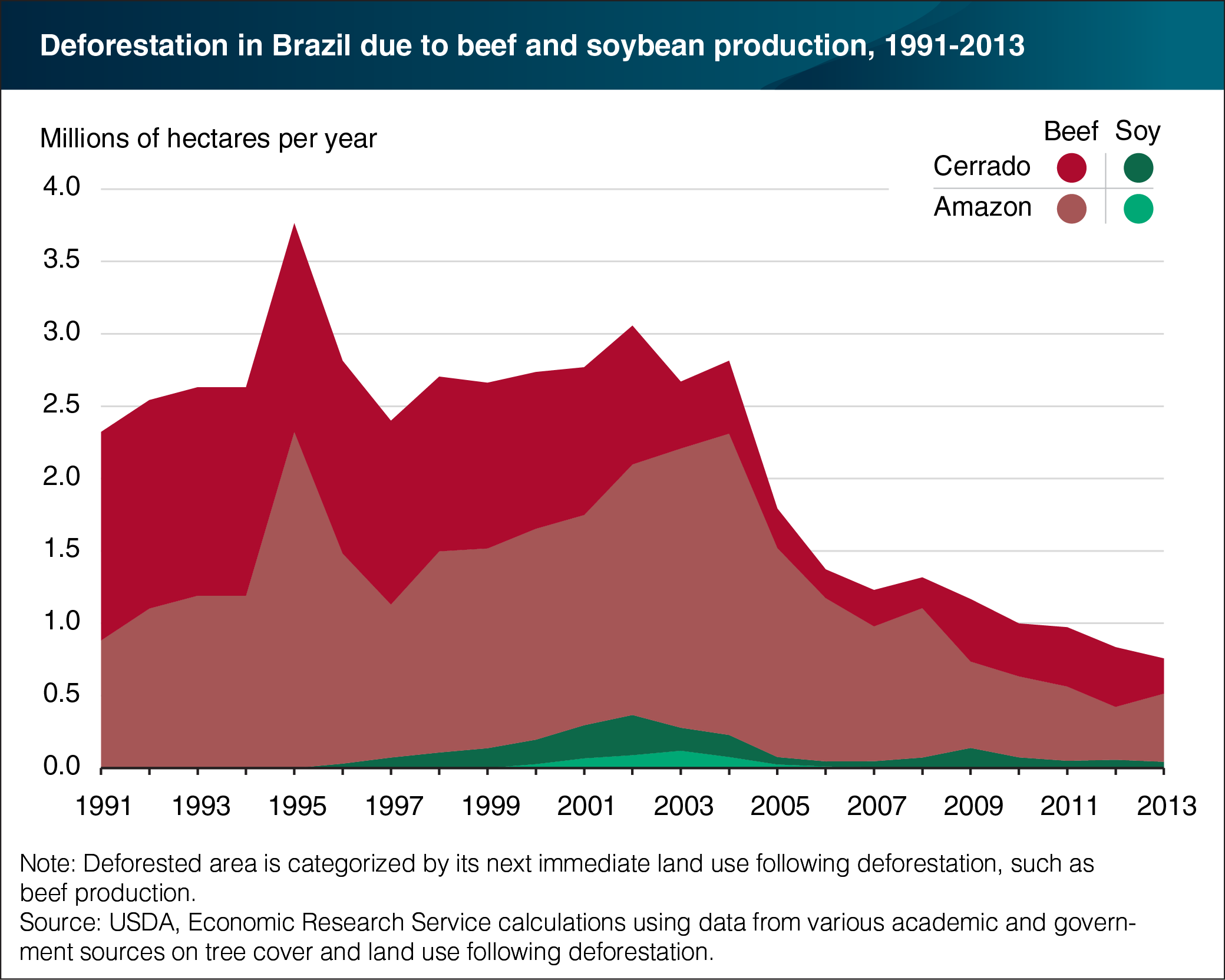Deforestation due to agriculture in Brazil has generally declined over time
- by Anne Riddle and Ron Sands
- 5/15/2017

Increasing global population and demand for food have led to rising agricultural production and demand for land for farming purposes. Expanded agricultural land has often come from tropical deforestation in developing countries that have become major exporters of commodities like beef, soybeans, and palm oil. In Brazil, for example, deforestation is linked most closely with the production of beef in the Amazon basin and the Cerrado region. Historically, cattle account for over 80 percent of deforestation in the Amazon and 88 percent in the Cerrado. At its peak in 1995, beef accounted for 3.75 million hectares of deforestation in Brazil, compared to 0.71 million hectares in 2013. Deforestation due to soybean production has generally remained low, particularly in the Amazon. Soybean production has mostly increased by expanding onto previously cleared cropland or pasture, rather than by contributing directly to deforestation. In more recent years, higher yields and policy changes have contributed to a decline in deforestation rates in Brazil. This chart appears in the ERS report International Trade and Deforestation: Potential Policy Effects via a Global Economic Model, released April 2017.


